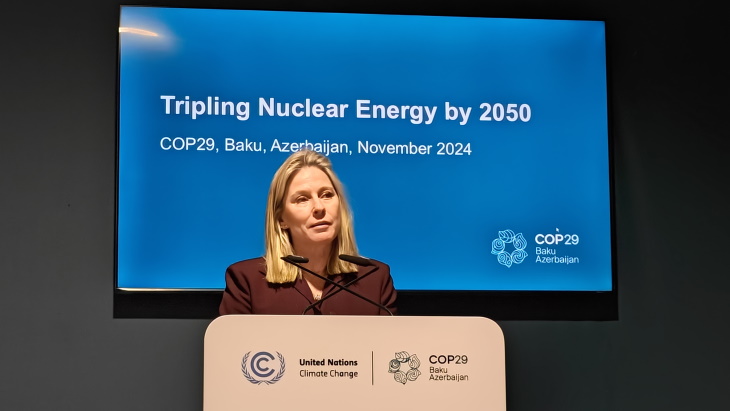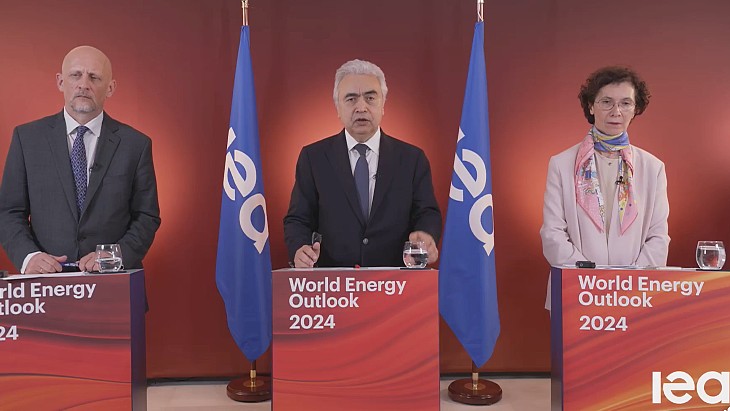WEC updates energy scenarios with nuclear industry input
.jpg)
In its new report - Future of Nuclear: Diverse Harmonies In the Energy Transition - WEC says: "Nuclear energy will feature in the global energy mix for decades to come but its share in the mix and its rate of growth will depend on a number of factors." Some of these factors, it says, are largely determined by actions taken within the sector itself, such as the speed of innovation in new nuclear technology and shaping policies on legacy waste management. Other factors, such as energy policies, market design and financing structures, are shaped and influenced by other stakeholders.
"Nuclear energy is and can be one of the most cost-competitive low-carbon options for generating electricity," WEC said. "Lifetime extension of existing reactors is one of the best power generation investments available in the market on the basis of the levelised cost of energy."
WEC, with contributions from World Nuclear Association, has gathered insights from senior energy leaders on the future of nuclear energy over the next two decades. Together they have jointly conducted a series of 18 "deep-dive" interviews to "explore the current state and future of nuclear". This has contributed to the development of a set of new global nuclear perspectives.
These comprise three scenarios for the energy sector up to 2060 which are referred to as Unfinished Symphony, Modern Jazz and Hard Rock. WEC has been developing the scenarios since 2010.
Modern Jazz represents a "digitally disrupted", innovative and market-driven world. Unfinished Symphony is a world in which more coordinated and sustainable economic growth models emerge as it seeks a low-carbon future. Hard Rock looks at the consequences of weaker and unsustainable economic growth with "inward-looking" policies.
In preparation for the 24th World Energy Congress, being held this week in Abu Dhabi, WEC tested the validity of the scenarios and decided to maintain its existing archetype framework. It has refreshed the World Energy Scenarios narratives, using a time horizon of 2040 to explore the "fast shifting landscape of innovation". The aim, it said, "is to support energy leaders as they grapple with the phenomenon of disruptive innovation and the implications of the transition to carbon free and sustainable energy sources".
In the new report, the future of nuclear under these scenarios is described in "three plausible, alternative pathways for the future development of the sector". The report also describes implications for the role of nuclear energy in the global energy transition.
Under the Modern Jazz scenario, nuclear accounts for 8% of global electricity generation by 2060, compared with 11% in 2015. Installed nuclear generating capacity increases by 50% from 407 GW in 2015 to 620 GW in 2060. In the Unfinished Symphony scenario, the share of nuclear reaches 13.5% by 2060, while its installed capacity almost triples to 1103 GW. Under this scenario, in addition to new build and lifetime extension initiatives, new nuclear technologies - small modular reactors, floating units and Generation IV reactor - make a significant contribution to the global fleet. In the Hard Rock scenario, nuclear share of global generation reaches 12.5% by 2060, with installed capacity increasing by 75% to 696 GW in 2060. The main focuses under this scenario are new construction in emerging markets and lifetime extension initiatives in developed economies.
WEC says there are "certain specific factors" that will affect nuclear power's future and how much capacity is installed by 2060. "Much will depend on reaching consensus on nuclear's role in the energy transition, lifetime extension and new build policy in developed and developing economies - issues which are intertwined with the pace of technological and institutional innovation".
The nuclear industry, led by World Nuclear Association, has set the Harmony goal for nuclear energy to provide 25% of global electricity by 2050. This will require trebling nuclear generation from its present level. Some 1000 GWe of new nuclear generating capacity will need to be constructed by then to achieve that goal. The Association has identified three areas for action to achieve this: a level playing field in electricity markets, harmonised regulatory processes and an effective safety paradigm.

_99697.jpg)










